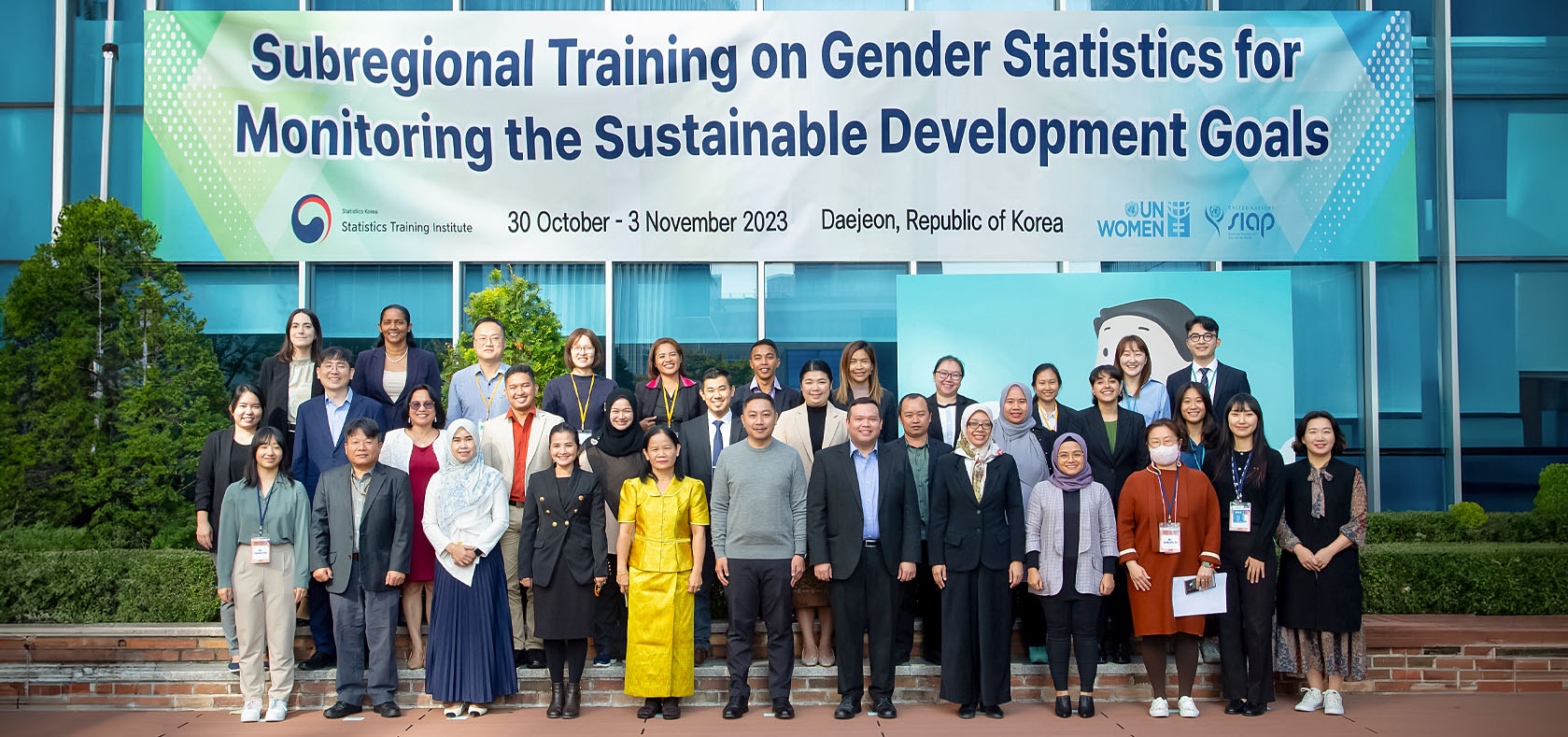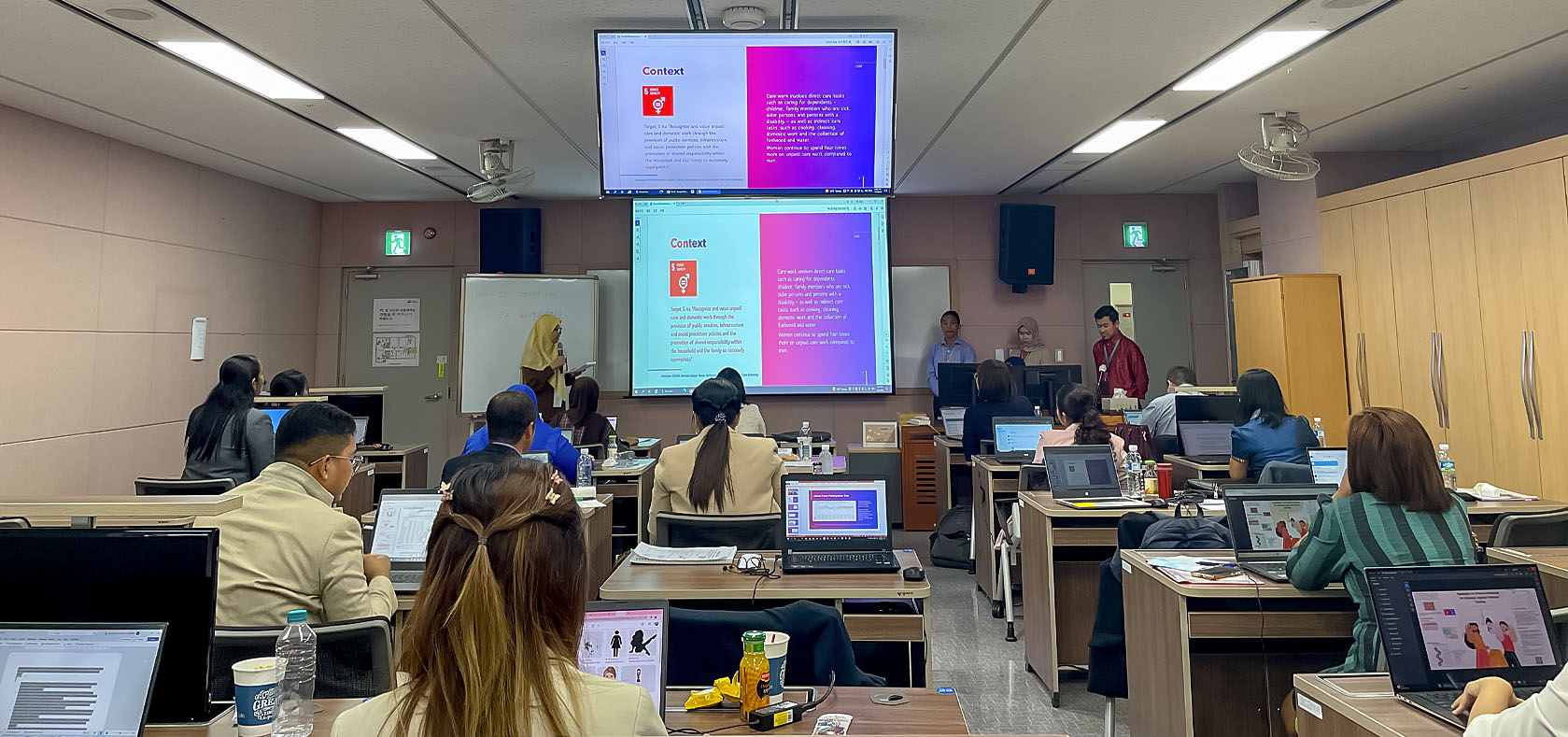
21 participants from 10 ASEAN countries gathered to participate in the 2nd Subregional Training on Gender Statistics for Monitoring the Sustainable Development Goals. Photo: Statistics Korea
English | 한국어
Daejeon, Republic of Korea — Twenty-one government officials from the countries of the Association of Southeast Asian Nations (ASEAN) have received UN Women training on how to use gender statistics to monitor progress on the United Nations Sustainable Development Goals (SDGs).
"Sustainable Development Goals Targets that are not monitored due to lack of data are likely to receive less priority in policymaking," said Jeongshim Lee, Director of the UN Women Centre of Excellence for Gender Equality. "Given these imperatives, the need to produce relevant and quality gender-sensitive indicators to monitor the SDGs is now greater than ever."
The officials dealing with gender statistics and data came from the 9 ASEAN Member States (Brunei Darussalam, Cambodia, Indonesia, Lao People's Democratic Republic, Malaysia, Philippines, Singapore, Thailand, Timor-Leste, and Viet Nam) and Timor-Leste (to be the 11th Member State). They gathered in Daejeon from 30 October to 3 November 2023 to learn about different types of gender data and their applications in monitoring the SDGs.
UN Women Centre of Excellence for Gender Equality and UN Women Regional Office for Asia and the Pacific, jointly organized the training with United Nations Statistical Institute of Asia and the Pacific and Statistics Korea. It was second in the series on Subregional Training on Gender Statistics for Monitoring the Sustainable Development Goals.
Through the training, the government officials learned how to better produce gender statistics, analyze gender statistics in relation to policies and the SDGs, and communicate gender statistics for evidence-based decision-making. Modules consisted of both introductory level and advanced statistical analysis which would be applicable for participants who are engaged in data production or more experienced data analysts.
The curriculum included:
- Gender data literacy and avoiding mistakes
- Calculating gender statistics for SDGs monitoring
- Finding the right gender data and conducting basic analysis
- User-producer dialogue
- Methods for gender data collection and estimation
- Analyzing microdata with a gender angle
- Multi-level disaggregation analysis to monitor the SDGs from a ‘Leave No One Behind’ perspective
- Communicating gender data
- Utilizing data for policymaking
"What we learned is not only the theory of gender statistics but also the application of the statistical software in our daily lives," said Jayson Christ Conti, a Senior Statistical Specialist at the Philippine Statistics Authority.
He said he also learned how to use gender statistics to make policies and how to communicate such statistics to the public.

Participants are engaging in a hands-on exercise for communicating the gender data. Photo: UN Women/Sujung An
Participants were afforded the opportunity to garner insights into best practices for monitoring the SDG targets in ASEAN Member States as well as in the Republic of Korea (ROK). This included an overview of ROK’s time-use survey model, which calculates time devoted to unpaid care work, and a version of the SDGs tailored to that country.
"I appreciated the case study from Korea,” said Budsara Sangaroon, the Chief of Social Information Analysis and Development Groups at the Thailand National Statistical Office. “It was more practical compared to my country, allowing us to observe how Koreans conduct analyses."
Said Kai Yin Erica Ngan, a statistician at the Singapore Department of Statistics said, "Sharing cases from various ASEAN countries expanded my understanding of different contexts and diverse perspectives on gender issues. The knowledge gained about logistic regression of gender data for SDGs monitoring is directly applicable to my work."

